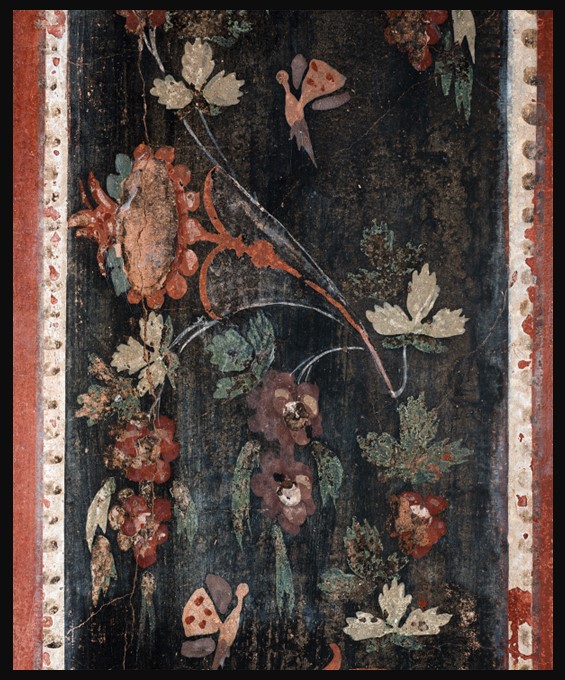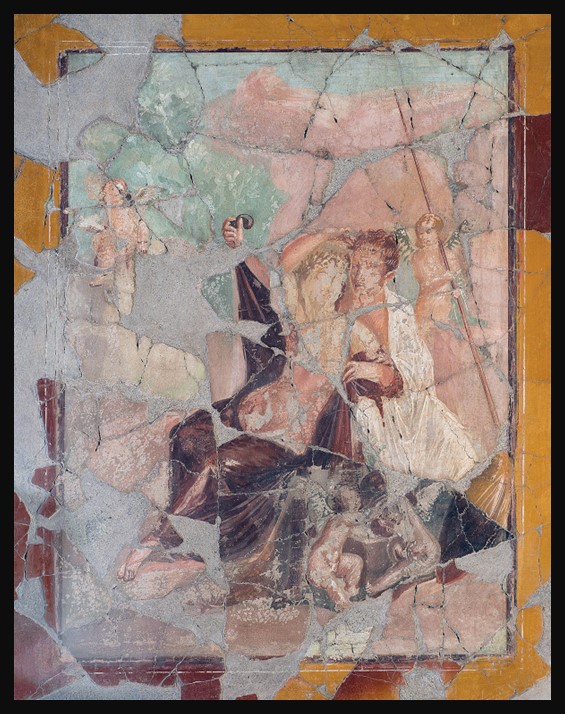
The House of the Bicentenary in Herculaneum is one of the site’s jewels. Back in the 1930s, archaeologist Amedeo Maiuri described it as a sumptuous noble house of elegant proportions. It is one of Herculaneum’s largest townhouses, as would be expected for a property with such a prominent location on the main street of the town, close to the theatre, the law courts, and the forum. The stately 1st-century BC house was built on two storeys and its façade was decorated with a brightly coloured green-and-red chequerboard pattern, with a balcony looking over the street. Inside, a large atrium with a central marble pool led to an elegant room for receiving guests. Both were covered with lavish mosaic pavements and wall paintings, all indicating that this was a noble house that belonged at some point to prosperous owners… https://minervamagazine.com/grand-designs-at-herculaneum.html
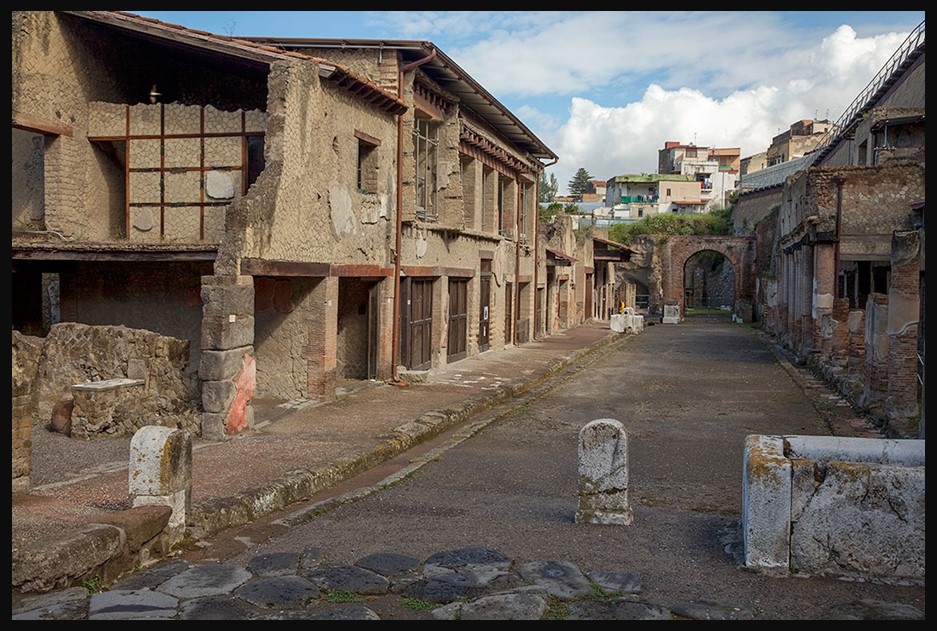
History of the Archaeological Site
The House of the Bicentenary was unearthed under the direction of archaeologist Amedeo Maiuri, in 1938, amidst the bicentennial celebrations of the excavations at Herculaneum. Concurrently, efforts were made to stabilize, restore, and exhibit the site, with artefacts showcased in the atrium’s left hall and a preserved wood screen displayed in the right hall. By 1983, however, the house faced severe deterioration, worsened by exposure to the elements and heavy tourist traffic. Structural instability, deteriorating wall paintings, crumbling tuffa walls, flaking paint layers, and lifting mosaics plagued the once-grand villa, necessitating urgent restoration efforts.
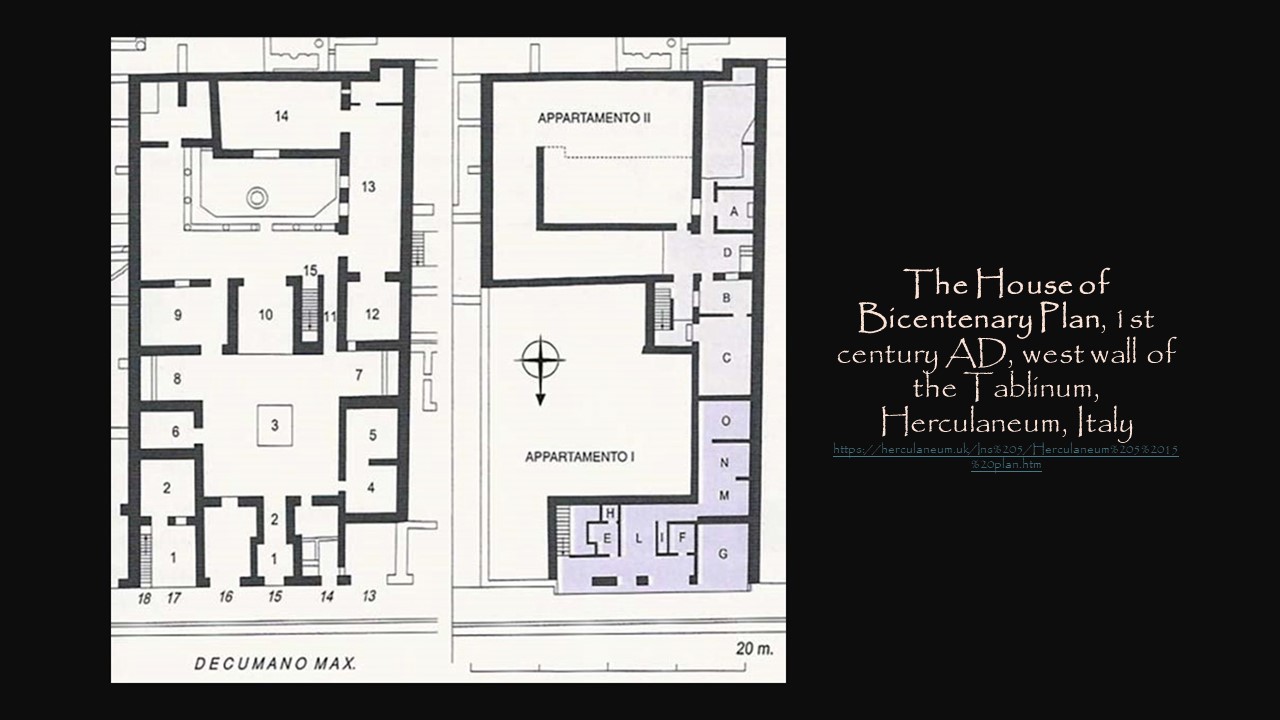
In a decisive move, the House underwent closure to visitors, heralding a transformative period in 2011. A collaborative effort ensued, with the participation of the Getty Conservation Institute (GCI), the Archaeological Park of Herculaneum, and the Herculaneum Conservation Project, united in a mission to comprehensively research, analyze, document, and stabilize the edifice’s architectural framework, wall surfaces, frescoes, and mosaic pavements. Particular focus was directed towards the restoration of the remarkable Tablinum area. The outcome of this concerted effort has been nothing short of remarkable. Such was the extent of the achievement that Domenico Camardo, the chief archaeologist at the Herculaneum Conservation Project, expressed the endeavour as not only a pivotal moment in the house’s preservation but also an opportunity for pioneering advancements in conservation methodologies and materials, with implications reaching far beyond the site itself. https://www.thehistoryblog.com/archives/56824
An Overview of the House of the Bicentenary…
Nestled along Herculaneum’s bustling main thoroughfare, the city’s Decumanus Maximus, the Bicentenary House once hosted Gaius Petronius Stephanus and his wife Calantonia Themis within its exquisite confines. Renowned as one of the city’s most opulent residences, sprawling across over 600 square meters and boasting an upper floor, its halls were adorned with meticulously preserved mosaic floors and frescoes breathing life into mythological narratives and intricate architectural and animal motifs. Particularly noteworthy is the Tablinum (Room 10 on the Plan), adorned with a collection of 4th Pompeian Style paintings renowned for their beauty and craftsmanship, offering visitors a glimpse into the peak of artistic expression within the site.
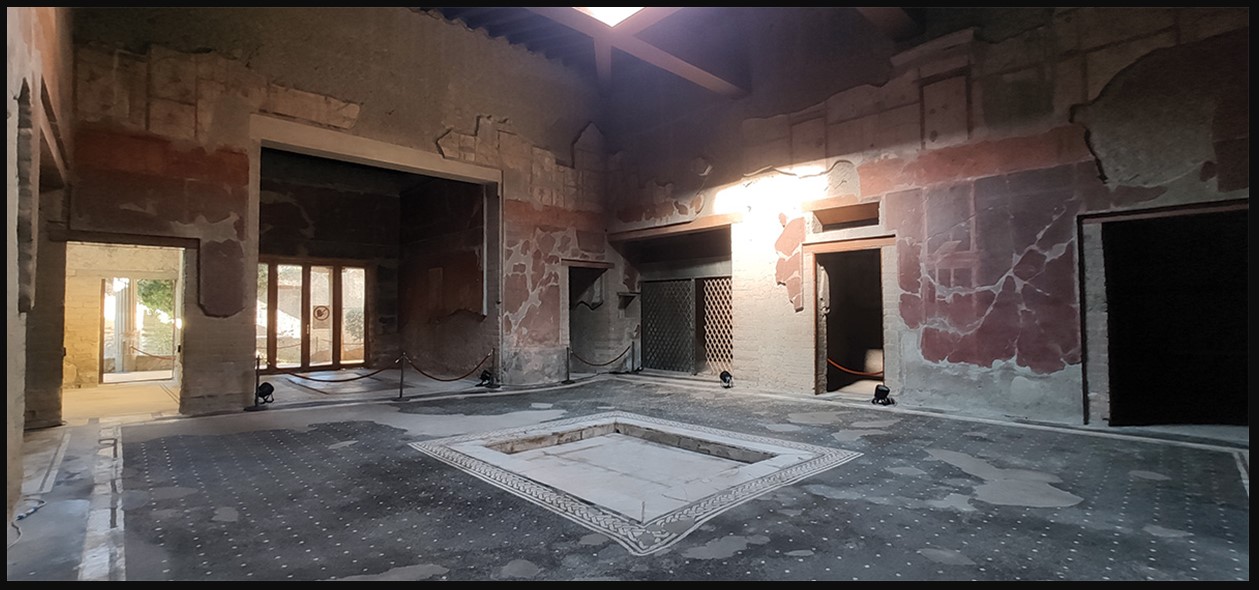
On the Tablinum Frescoes…
The decoration of the Tablinum is superb. The room’s ensemble of wall paintings exhibits artistic and archaeological importance portraying mythological scenes, cupids in a variety of activities, and portraits of Dionysiac figures of the utmost elegance and sophistication. Finally, the unique mosaic pavement in opus sectile and opus tessellatum, creates a unique mosaic floor, blending opulent reds, yellows, and blacks in a sophisticated scheme.
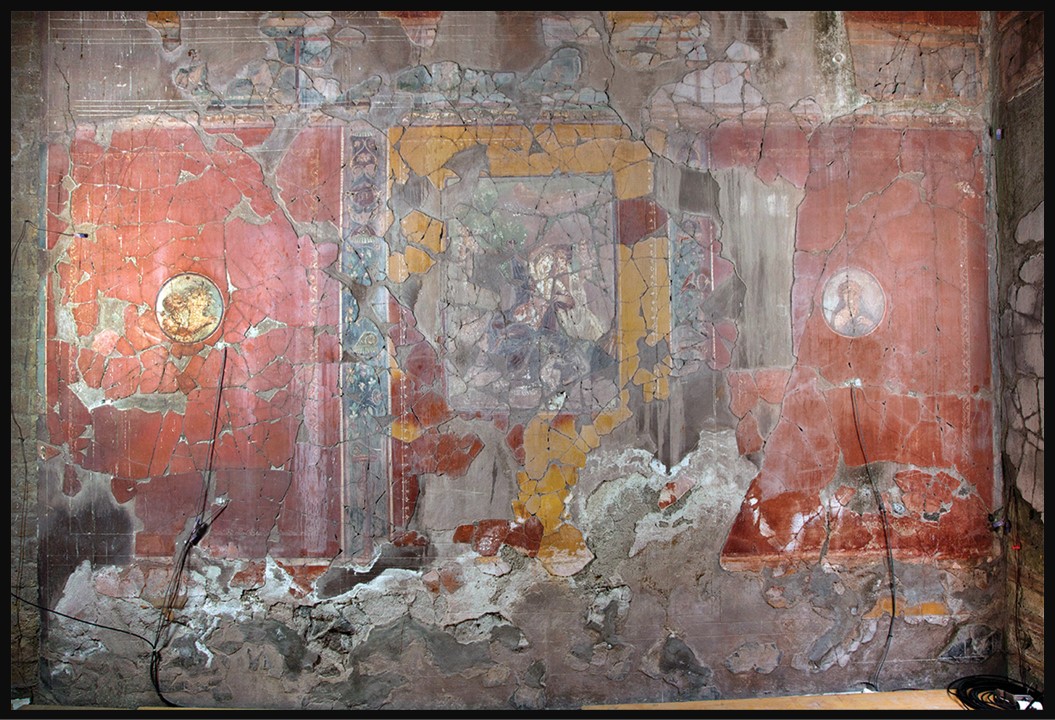
According to Amedeo Maiuri… The tablinum preserves a rich, sparkling marble pavement, like a polychrome carpet, and on the walls, paintings, medallions, and a frieze; in the panels are represented the myths of Daedalus and Pasiphae and of Venus and Mars; in the medallions are busts of Satyrs, Sileni and Maenads. On the upper part of the walls runs a frieze with cupids. From the tablinum, we reach the little portico with the garden and the rustic rooms on the ground floor. https://herculaneum.uk/Ins%205/Herculaneum%205%2015%20p3.htm
For a PowerPoint on the House of the Bicentenary, please… Check HERE!
